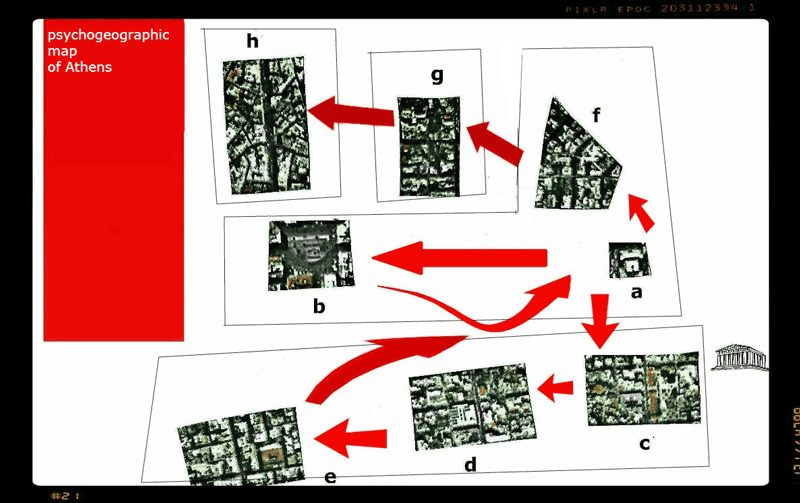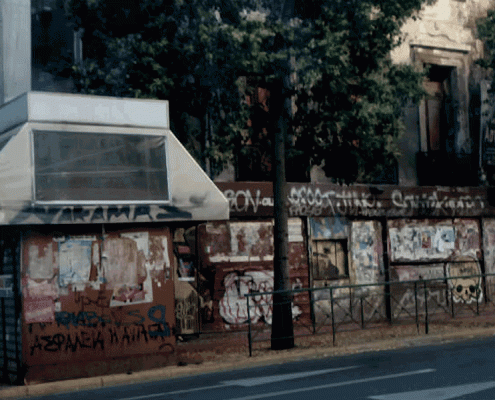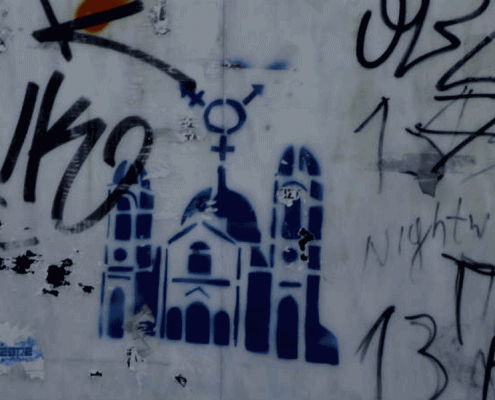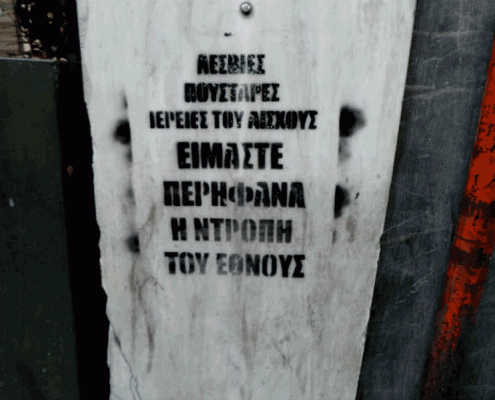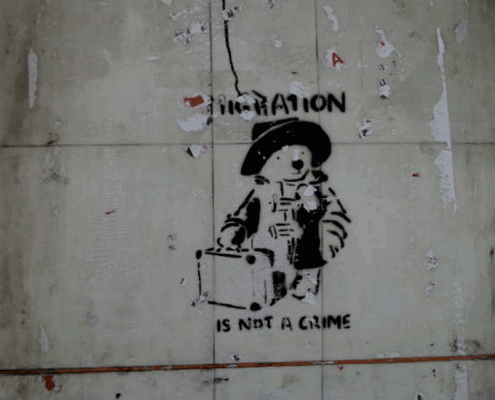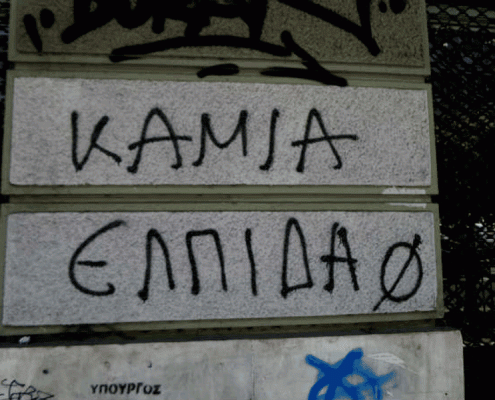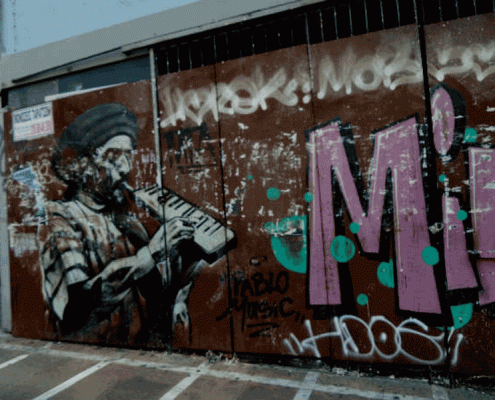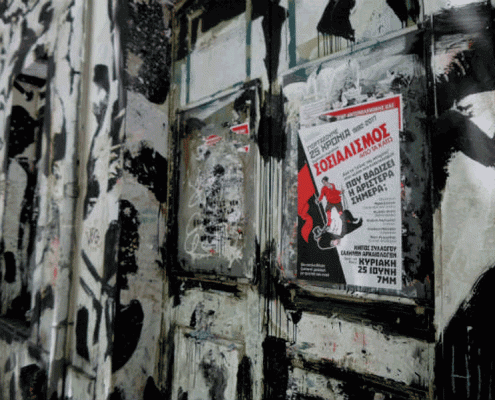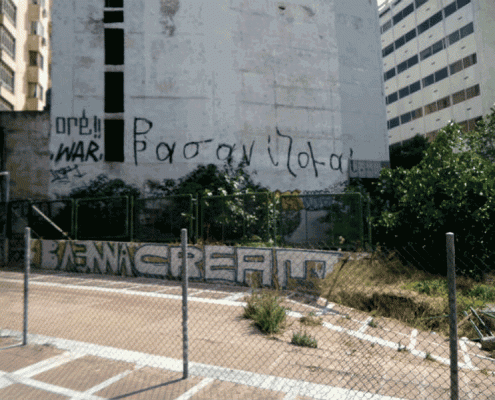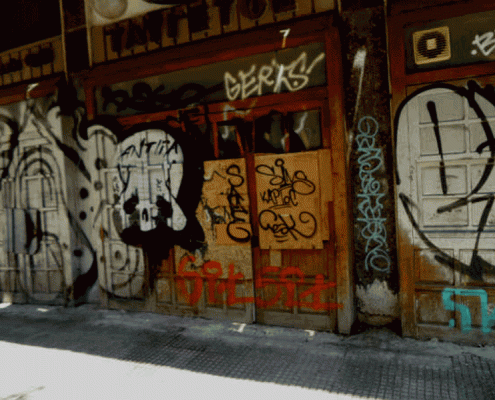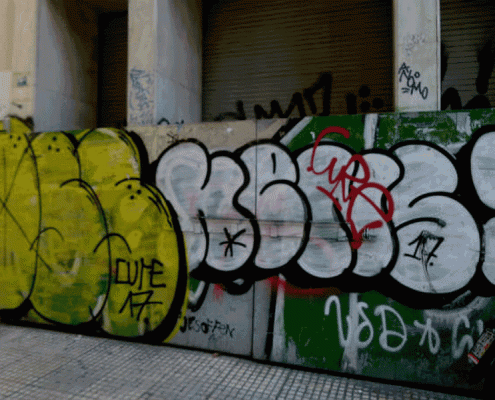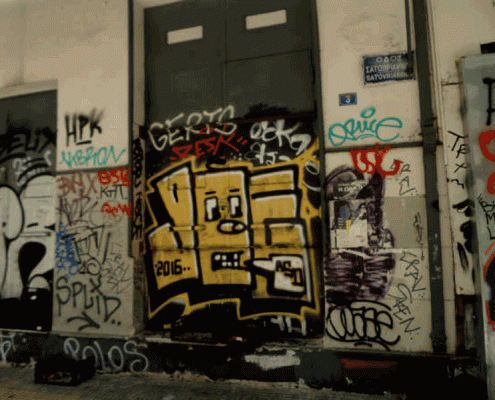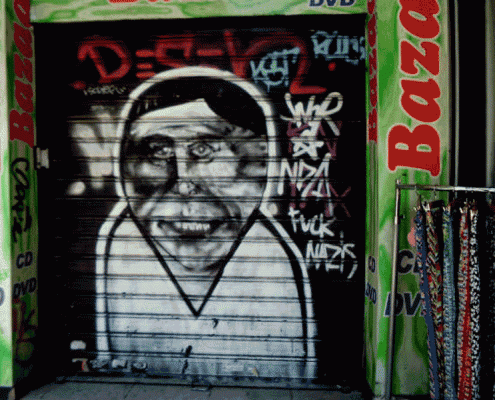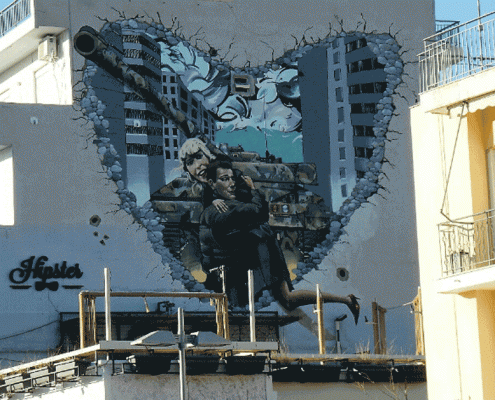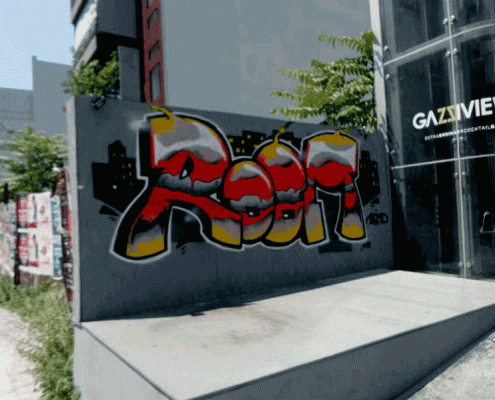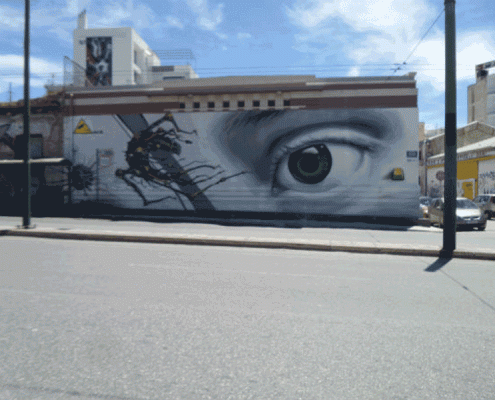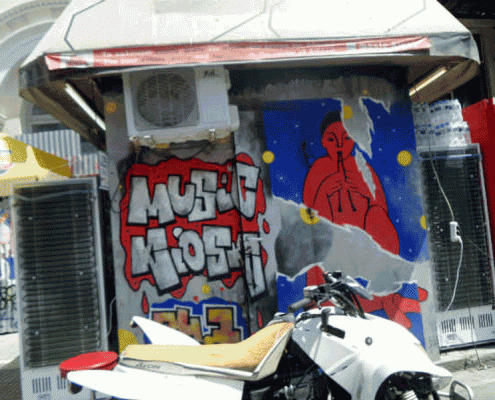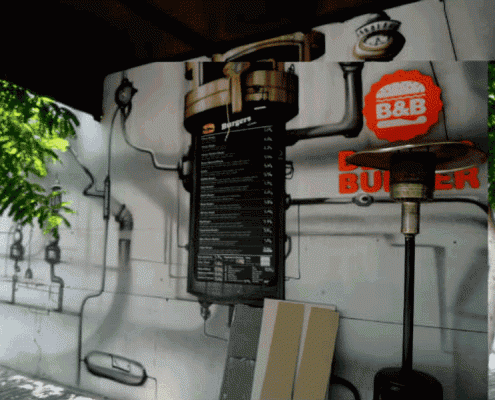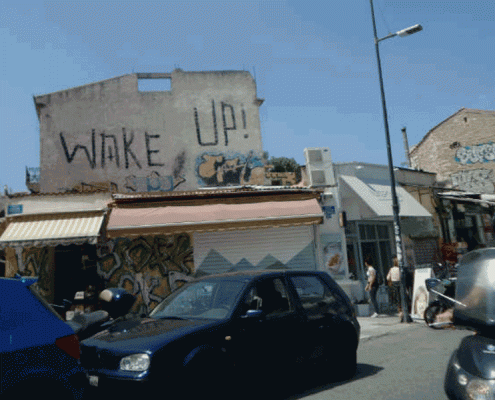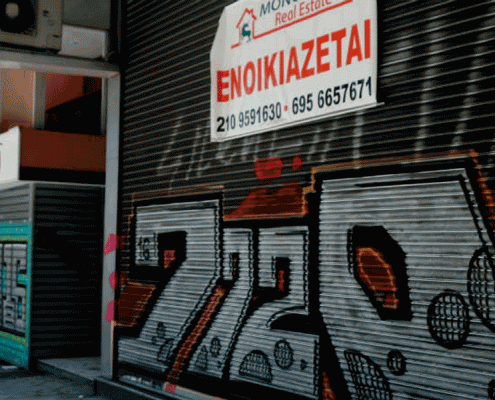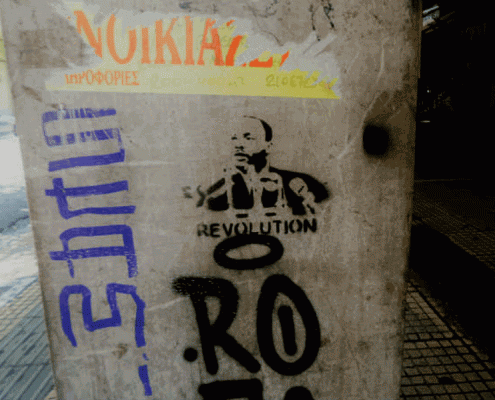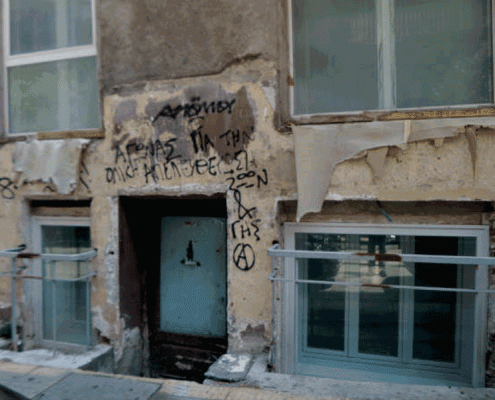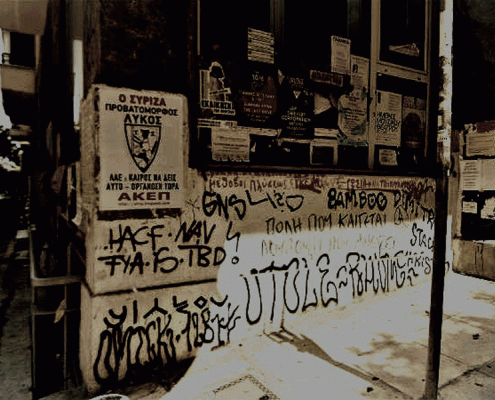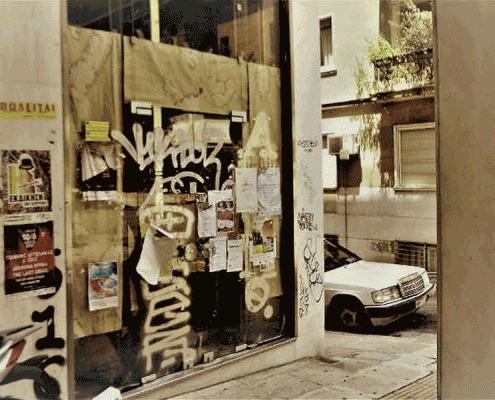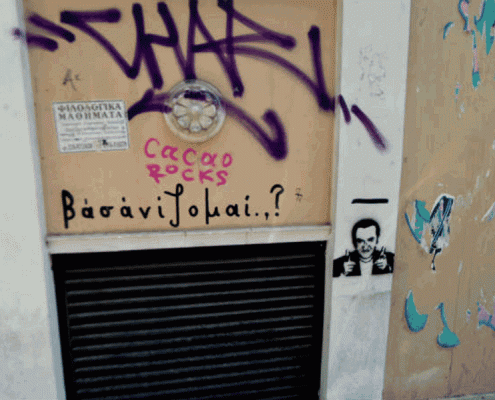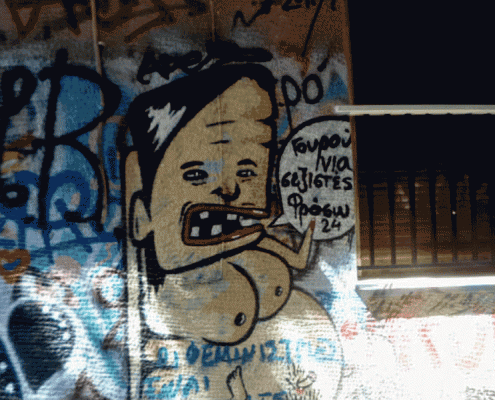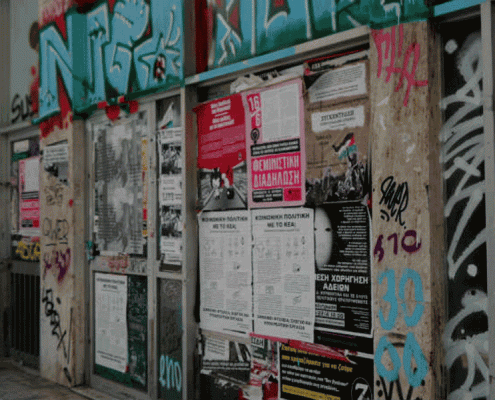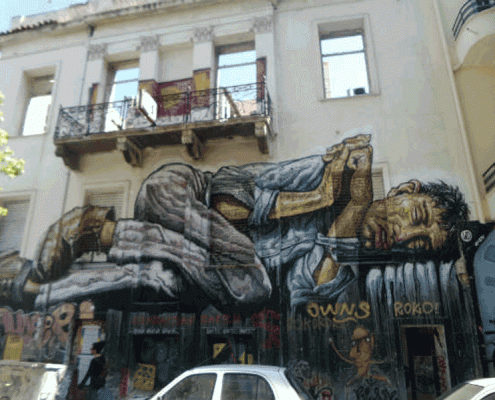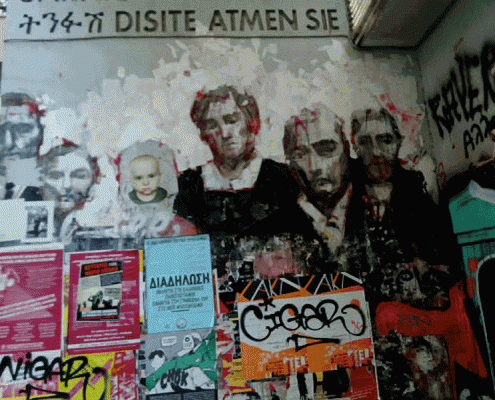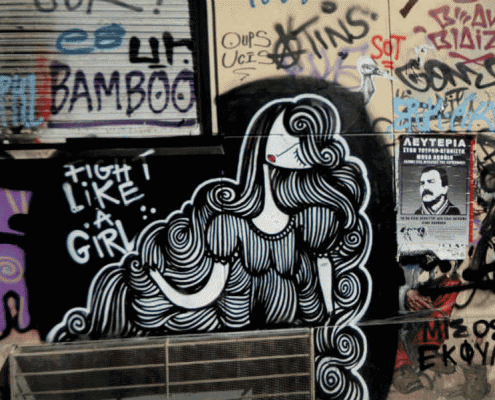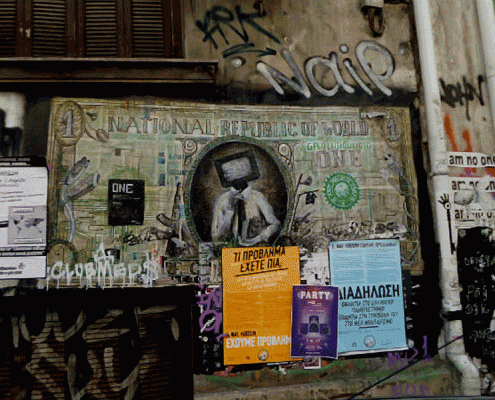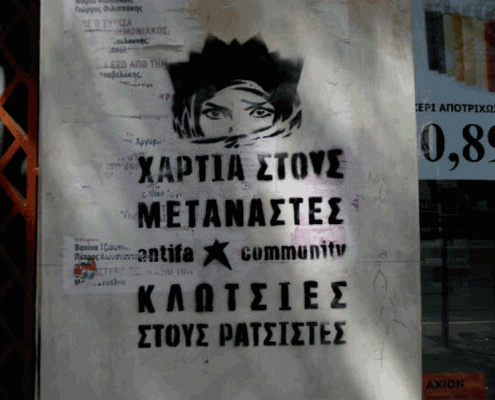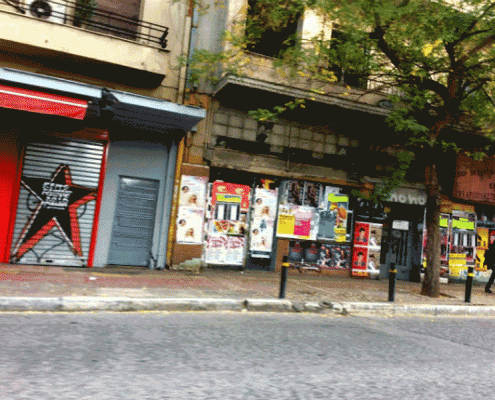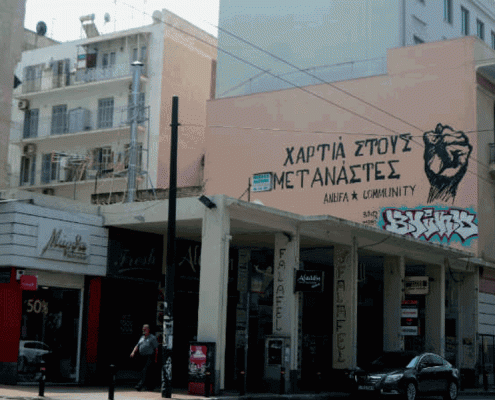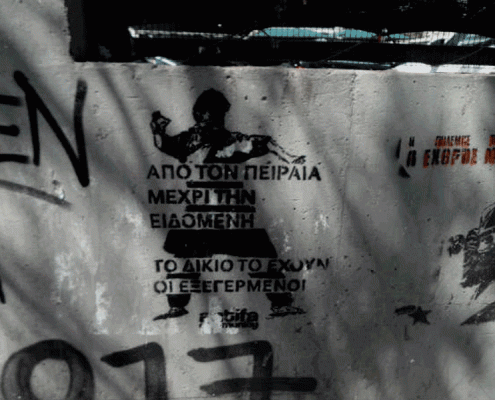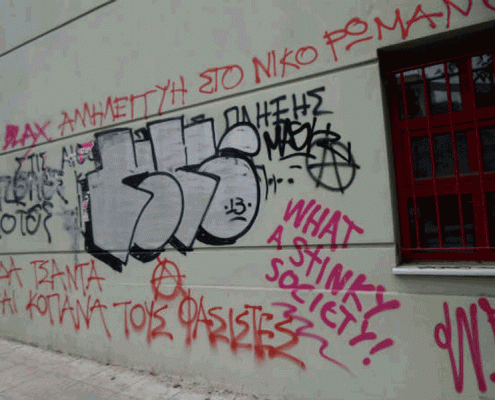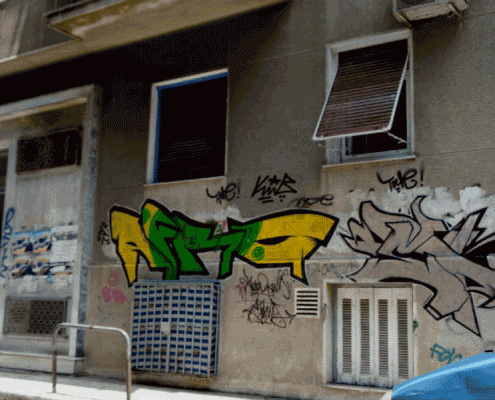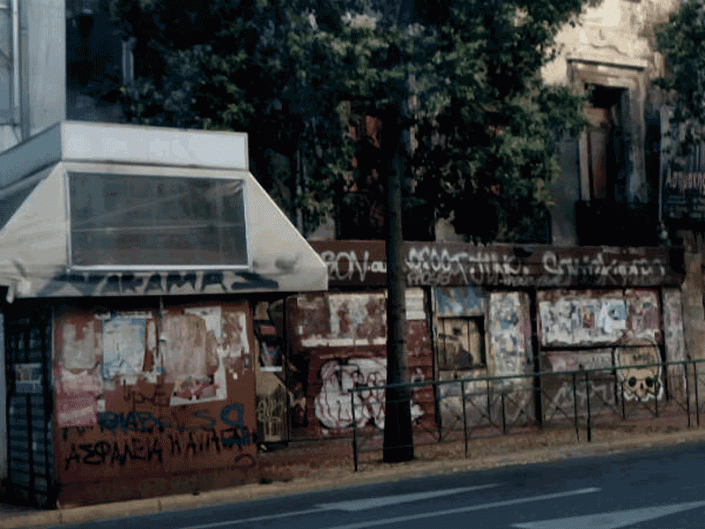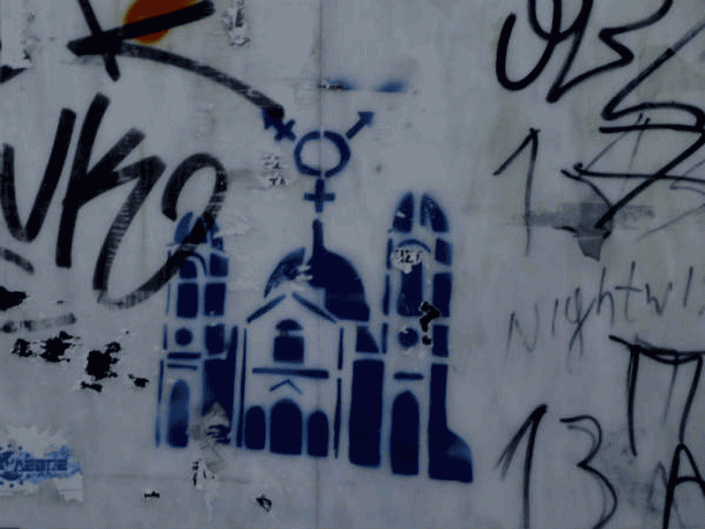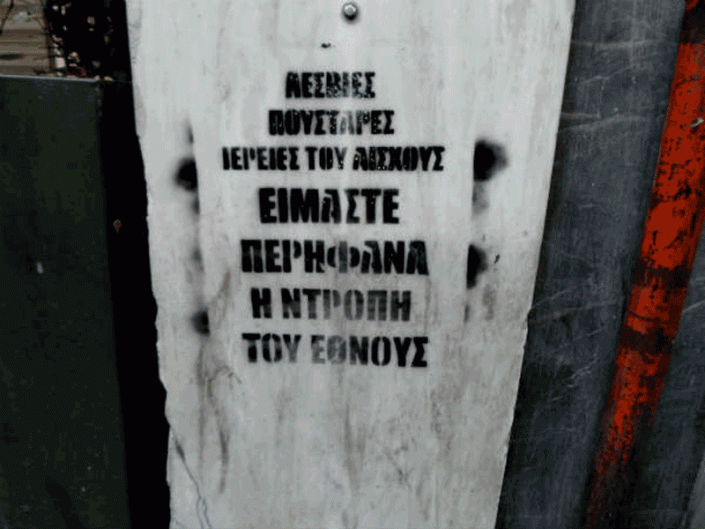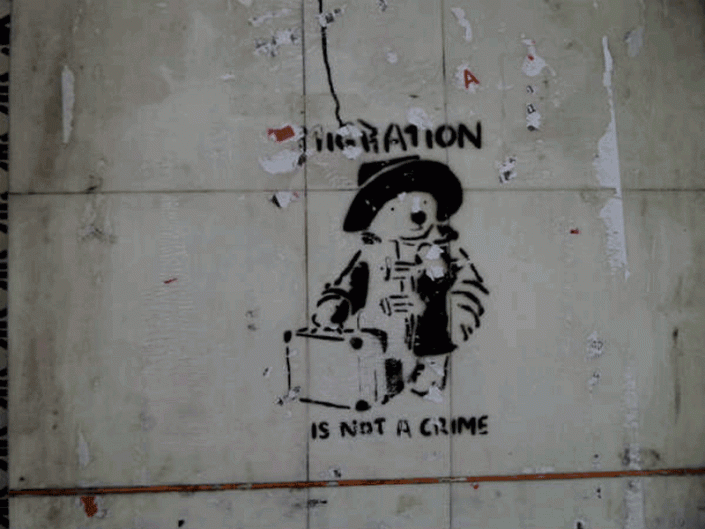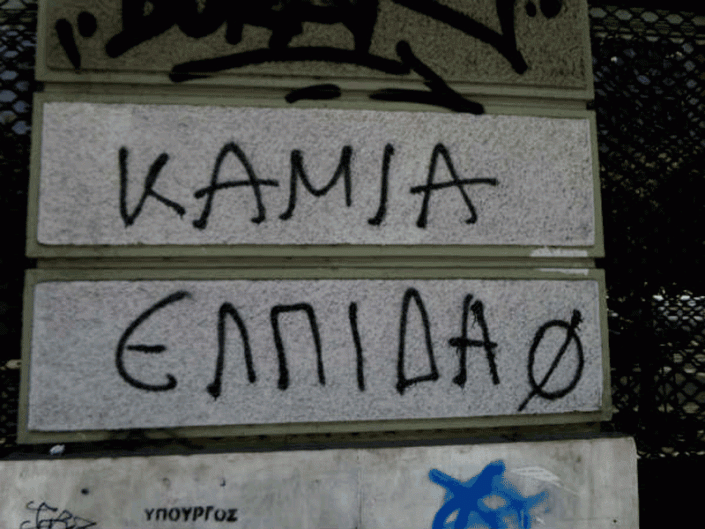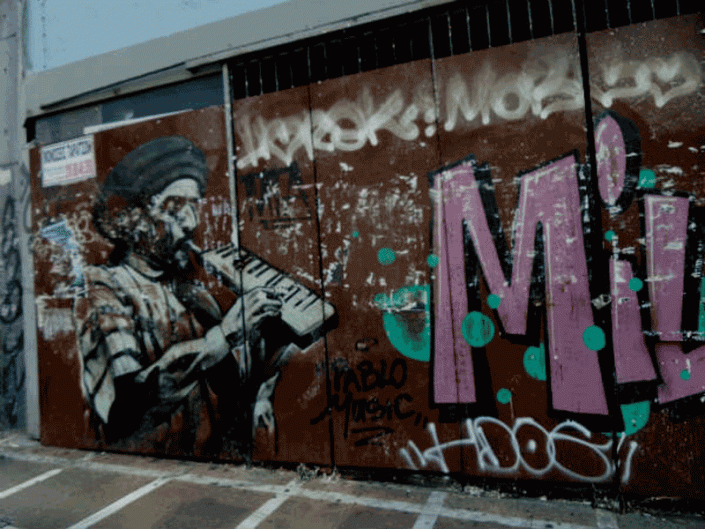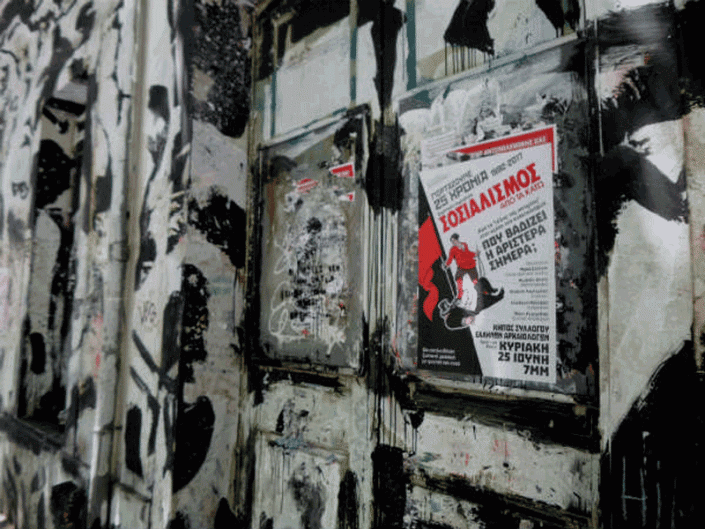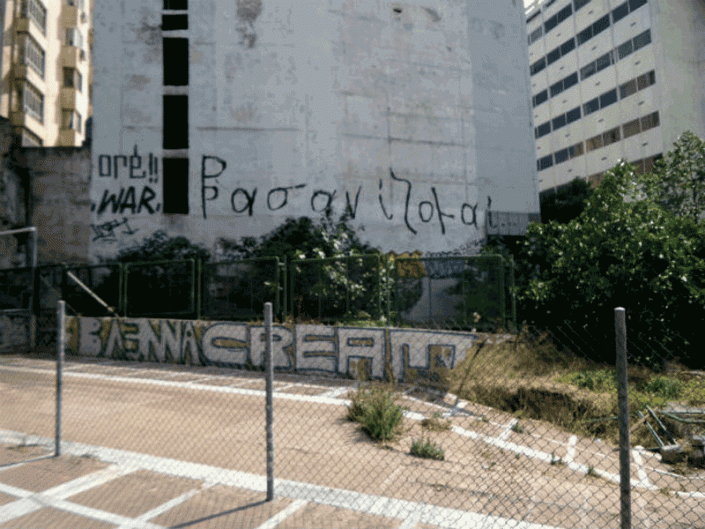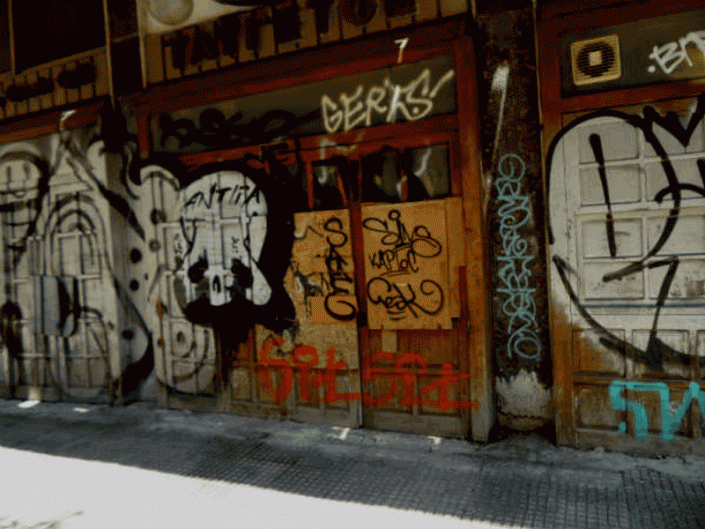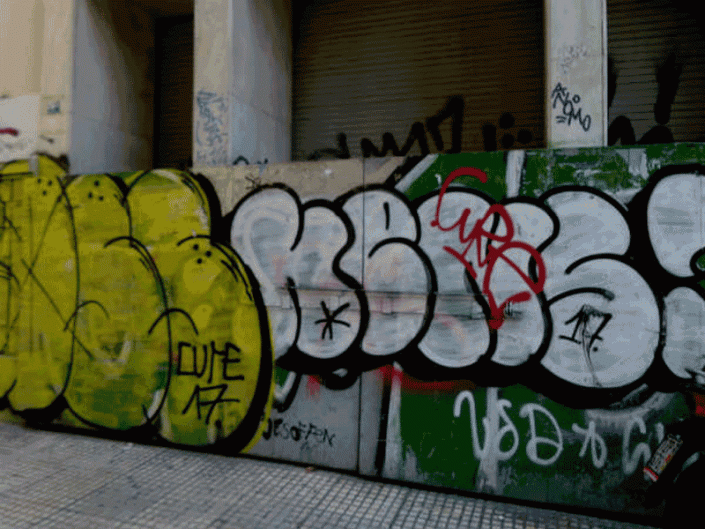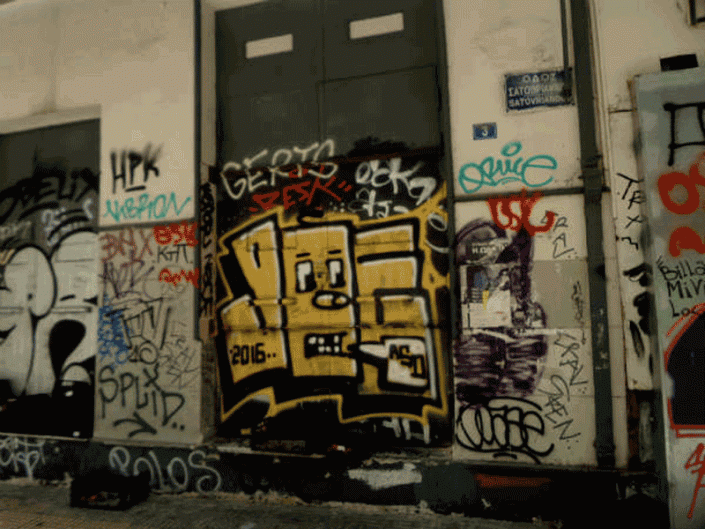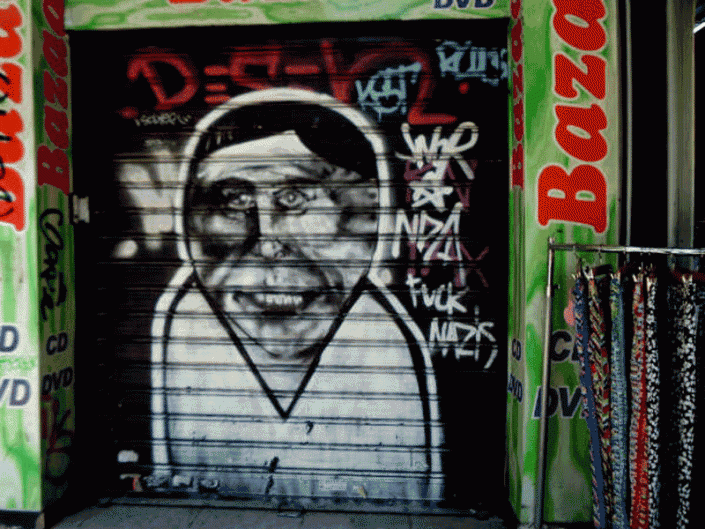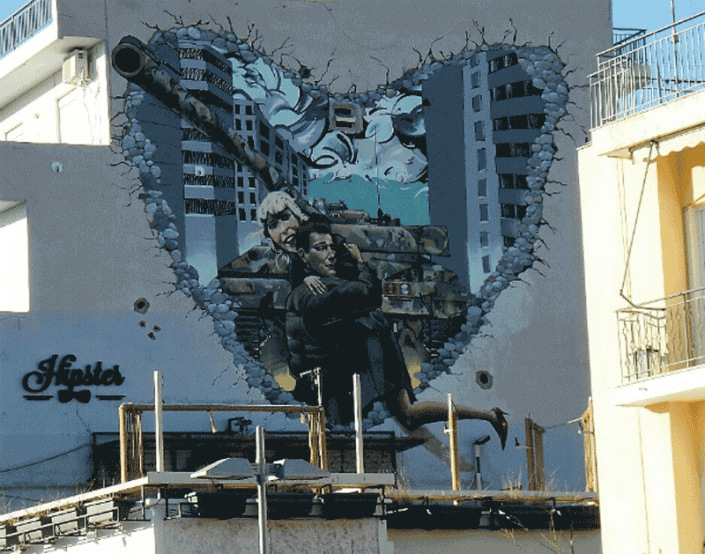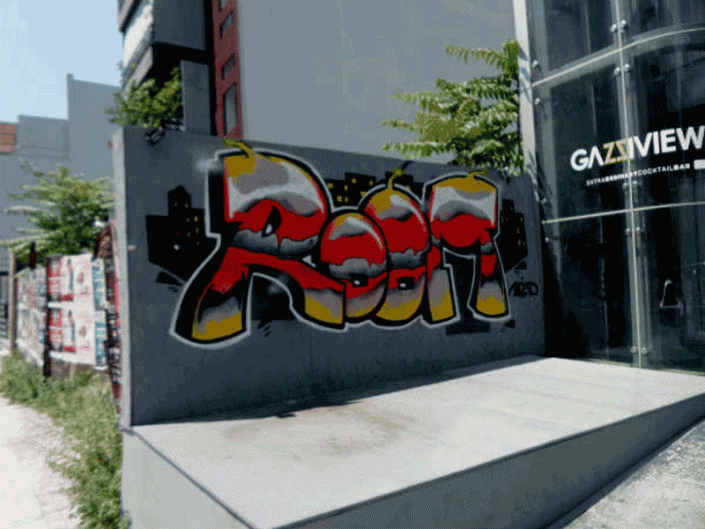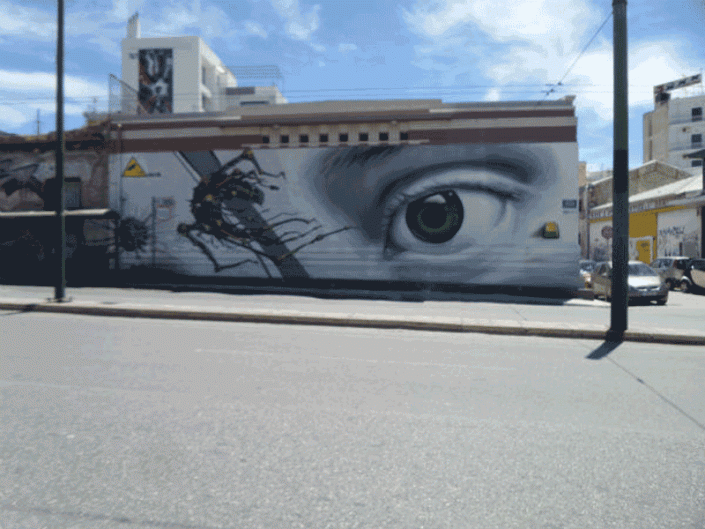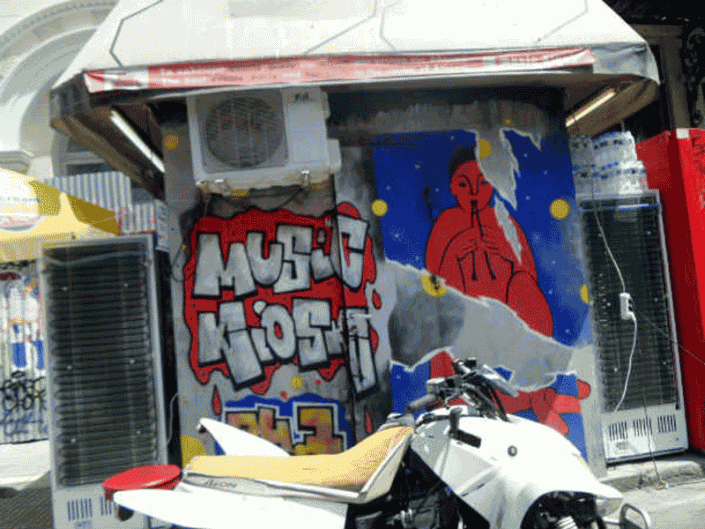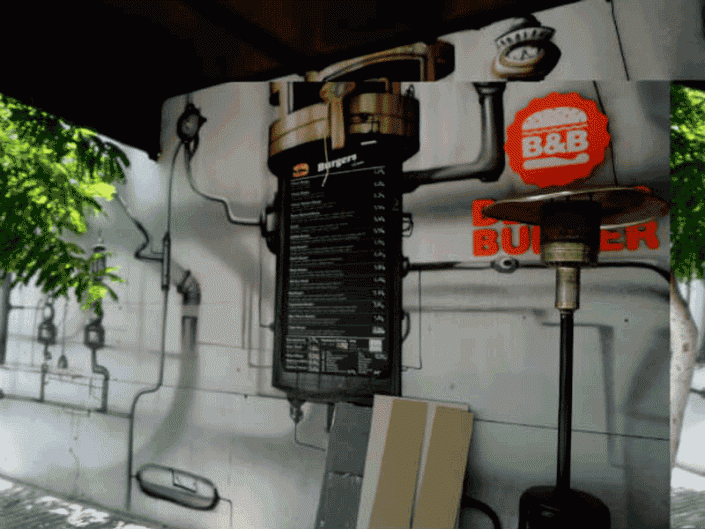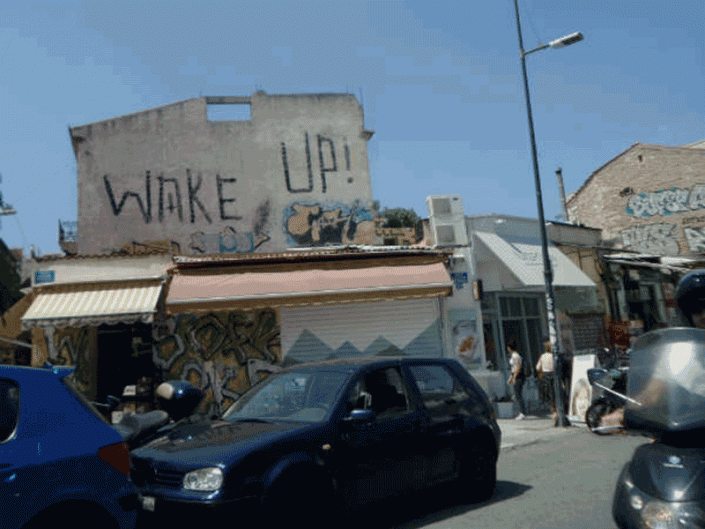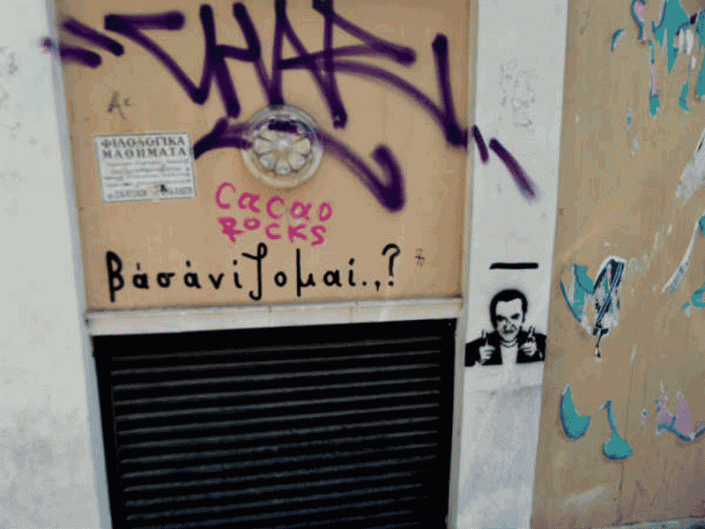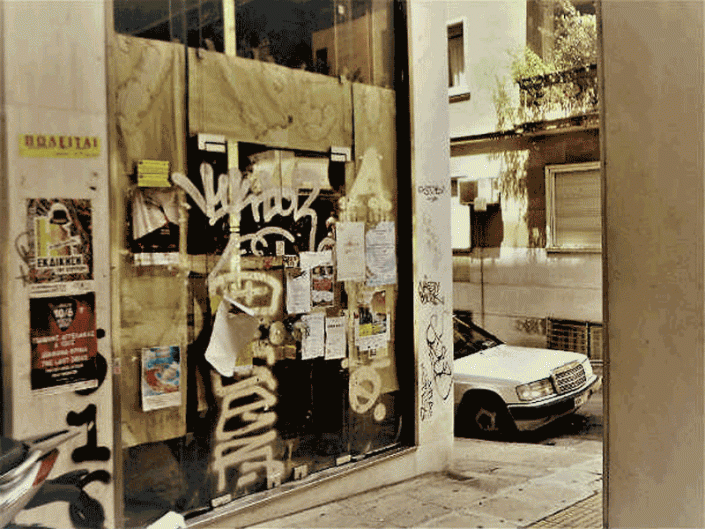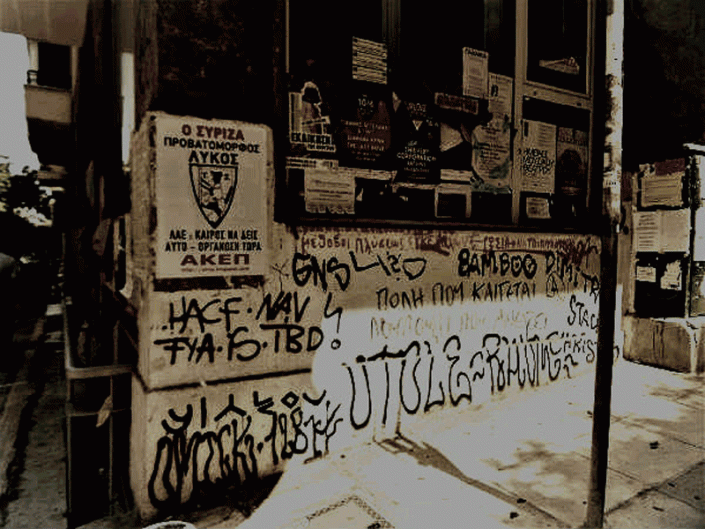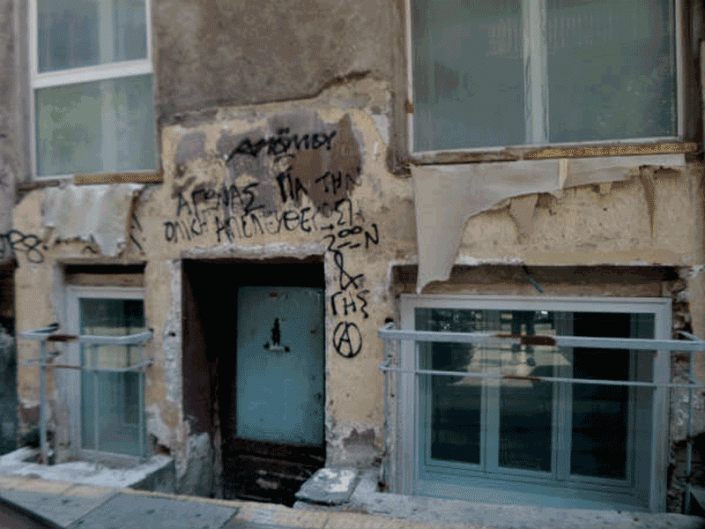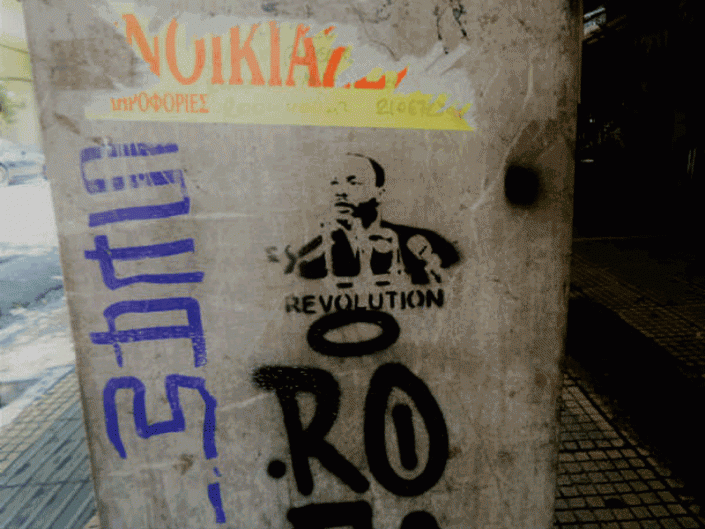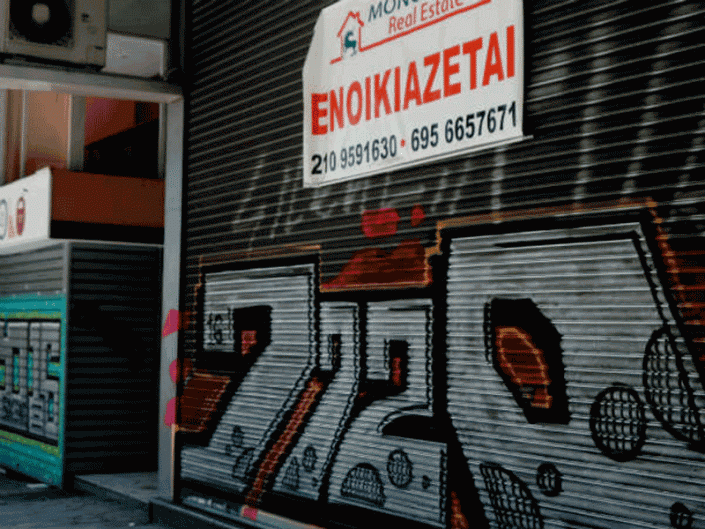Alternative forms of expression on the city’s walls in times of crisis
Pazarzi Iliana|Tsangaris Michael
Culture, Quartiers
2018 | Jan
While the Greek economy struggles to recover, social discontent markedly manifests through the slogans on the walls of urban centers [1]. In times of crisis, the walls in central neighbourhoods of Athens have been converted to platforms of free expression. Graffiti and slogans constitute alternative means that potentially express aspects of social demands and reflect the spirit of various social groups. But, graphics on the walls are considered by authorities as illegal since they occupy part of the urban space without permission.
This article presents the ‘pulses of the city’ as echoed in the authors’ mind and psyche during an experimental wandering (dérive) around central neighbourhoods of Athens. It will be shown that slogans written on the walls reflect a wide range of opinions and illustrate the diversity of certain local groups’ reactions in relation to recent developments.
Although cyberspace can be eventually considered as one of the principal environments of contemporary communication, in practice people still live and interact with each other within the real-physical urban space. According to Park (1925), big cities do not simply constitute artificial constructions and mechanisms, but also express human nature. Lefebvre argued that urban space belongs undoubtedly to the sphere of politics since various conflicting interest groups seek to manage and exploit it (Lefebvre, Enders 1976). According to Negri (2009), the contemporary ‘industry of architecture’, in cooperation with the fashion and the film industries, contributes to the suppression of any act of resistance against the establishment by projecting ‘artificial light’ to all aspects of our life. Eventually, as argued by Harvey (2003), individually and collectively we are all architects. Thus, it is in our hands to re-shape the urban environment. All people have ‘the right to the city’ (Lefebvre 1996).
Social movements often employ radical techniques against power structures. Atton (2001) outlined that ‘alternative media’ offer the possibility for democratic communication to people being excluded from mainstream mass media, while Downing (2001, 2008) called ‘radical’ the media that social movements use. Furthermore, according to his theory, alternative media also include artistic production and cultural practices, such as street theatre, tattoos, clothing, graffiti and many more. In the same context, Fuchs (2010) set urban art murals, posters and graffiti under the heading ‘critical media’ and stresses that their content may include the ‘suppressed possibilities of existence’ expressed by dominated groups and individuals.
Undoubtedly, in everyday life, urban space is converted to an open community platform that carries graphics of various forms and content, communicating messages, which often draw our attention and invite us to daydreaming. All outdoor advertisements, municipal banners, traffic signs, authorised graffiti etc. can be considered as mainstream media of visual urban communication. On the contrary, alternative media include all outdoor unauthorised expressions, such as wall slogans of any content (political, sports or existential content), illegal posters, graffiti, stickers etc. Hence, speaking about unauthorised outdoor graphics, we refer here mostly to unofficial expressions of any form, performed without permission on the city’s walls, billboards, public transport etc. Unauthorised outdoor graphic illustrations obviously challenge the existing power structures and belong – as an action of communication – to the radical media.
Psychogeography
According to Debord, psychogeography investigates ‘the precise laws and specific effects of the geographical environment, consciously organised or not, on the emotions and behaviour of individuals’ (Engel-Di Mauro 2008:23). In this spirit, to better understand the significance of alternative outdoor graphics in Athens, we performed a city wandering (dérive), which constitutes one of the most significant psychogeographic techniques of the Situationists (Debord 1955, 1956). In fact, we passed through various urban environments in a state of mind withdrawn from daily routine. During such a wandering (dérive) participants must be driven by the perspectives of space and the attraction of encounters, without any particular destination, forgetting work, leisure or other conventional motives for movement and action.
After wandering around the city, we sketched a ‘psychogeographic’ map (Figure 1), which illustrates our route and groups the places that we passed through according to ‘unities of ambiance’, that is, unities of uniform unauthorised outdoor graphics and uniform urban features concerning the typology of business stores and buildings or the attitude of people. According to Chombart de Lauwe (1952), the city’s neighbourhoods are not defined only by geographical and economic factors, but also by the behaviour and attitudes of their inhabitants. The ‘unities of ambiance’ constitute psychogeographic formations as perceived by the authors-wanderers, and divide the city into distinct parts according to certain features, including social factors, the composition of the population, the aesthetics of the landscape, the noise, the light, the urban planning etc. The unities of ambiance can be articulated according to a certain social or demographic criterion. For instance, a unity may consist of a homogeneous population hanging out in the area and including artists and students. However, only one certain feature, such as a dominant architectural style, is not enough to define a unity of ambiance. According to Debord, a unity of ambiance contains many components. However, social morphology and the ‘soft’ and flexible features of the city, such as human activities, the presence or absence of light and sound or even people’s ideas are very important. The ‘hard’ elements, such as the form, the size or the location of the buildings, just articulate the above-mentioned features (Sadler 1999: 70).
Figure 1: A psychogeographic map drawn by the authors representing their wandering (dérive) around the city of Athens. The areas a, b, and f form a single unity of ambiance, the areas c, d and e form another unity of ambiance, while the areas g and h form two other distinct unities
The psychogeographic research
The field of our wandering (dérive) included the central area of Athens. Αs point of departure we selected Syntagma Square (a at Figure 1). Initially, we followed a zig zag route, which passed through Omonoia Square, Monastiraki, Psiri Square, Keramikos, Kolonaki and Exarcheia districts and, finally, we moved away from the center walking along Patission Avenue (b, c, d, e, f, g and h at Figure 1 [2] ).
Syntagma Square is located in front of the Greek Parliament where most of the demonstrations take place. Although the square is protected by the police and gets rapidly restored after demonstrations, many faded slogans were still on the walls provoking strongly our senses. In the surrounding central streets and, more precisely, along Filellinon Street, Mitropoleos Street, Ermou Street, Karagiorgi Servias Street and Stadiou Street, our emotions intensified as the graphics’ density grew higher. In this area, we observed all forms of unauthorised outdoor graphics, such as slogans that referred to a series of issues, varying from gay rights, immigration, anti-establishment declarations and complains about the economic crisis to lyrics of existential content, stencils, classic graffiti, street art, stickers and tagging (Photos 1 to 6). The switching of expensive stores and luxury hotels with closed bankrupt businesses, covered by political slogans, graffiti and posters, reflected to our senses an atmosphere of frustration, motivating intense negative and pessimistic moods, as well as a tendency to revolt.
Photos 1-6: In the area around Syntagma Square we observed all forms of unauthorised outdoor graphics, mostly political slogans, stencil, classic graffiti, street art and tagging
Walking along Stadiou Street, we approached Omonoia Square, which is located at the heart of the city center. Undoubtedly, this area constitutes a multicultural zone. However, apart from tourists, immigrants and refugees, we encountered jobless and homeless people, illicit street vendors, pickpockets, drug addicts etc. Most of the walls, where not covered by graphics and posters, were black due to air pollution. Graphic representations on the walls included mainly classic graffiti, stencil, tagging, rhymes concerning football teams and political slogans against the crisis and austerity measures (Photos 7 to 12). All these graphics, along with the closed and bankrupt business stores, the composition of the wandering population including many unfortunate or marginal persons and the garbage lying on the streets, provoked our sorrow, despair and desire to protest. The atmosphere also in this area remained pessimistic, in a déclassée version, since the local market was not characterised by the luxury of the business stores at the area of Syntagma Square.
Photos 7-12: In the broader area around Omonia Square we observed mostly classic graffiti, tagging, stencil, political slogans, football rhymes and street art
During our wandering around Monastiraki, Psiri and Keramikos (Gazi), we realized that there was a different aesthetic quality characterizing the walls , since many graphics appeared to be commercialized or, at least, we perceived them as artistic youth innovations following the mainstream culture. It seemed to us that all these areas constitute a ‘unity of ambience’, since it was very difficult to define precisely when one state of mind provoked in a certain neighborhood gave place to another. All these neighborhoods are meeting points for the youth and get crowded especially on weekends. Actually, they are stamping grounds of young people following the mainstream culture. There is a variety of commercial activities, such as the traditional Monastiraki bazaar, fashion stores, bars, night clubs and restaurants offering diverse types of entertainment. In these commercial places, radical political slogans and graffiti had different effect on our senses, in comparison with the areas that we had already visited. We observed a large variety of graphic expressions, such as street art, classic graffiti, tagging etc., which often came along with political content. This mixture, embedded within the omnipotence of the entertainment industry’s commercial environment, often caused us a certain amount of confusion. In these areas, it was very difficult to distinguish radical expression from the commercialised graffiti of the mainstream culture. Most of the stores had assimilated the radical media aesthetic forms and, sometimes, they used even the same socio-political messages for commercial reasons. It was clear to us that the aim of these performances was not to support social struggles and give the floor to marginalised members of the society but to attract customers or, at best, to experiment with mainstream youth art. In this sense, the alternative mechanisms of urban expression are subjected to ‘objectification’ and ‘recuperation’ (Asger 1960, Lukács 1968, Debord 1969), bringing radical struggles together with other practices that belong to the sphere of ‘Spectacle’ (Debord 1970), such as commodities, promotion and fashion (Photos 13 to 18). Although our mood was less anxious in comparison with our mood in other areas, due to the walls’ intense ‘beautyfication’ by the entertainment industry, after all, our emotions were shaded again with lighter tones of indignation and bitterness about the current crisis, the immigration issue and gender discriminations, influenced again by the few radical expressions that we managed to distinguish.
Photos 13-18: In the ‘unity of ambiance’ including Monastiraki, Psiri, Keramikos and Gazi, the obvious purpose of many graphics was not to support social struggles but to attract customers or experiment on artistic expressions of the mass culture
Walking towards Kolonaki district, which is located to the southern side of Lycabettus Hill, the pattern of emotional fields that outlined the environment to our mental state gradually started to change. Kolonaki is a rich neighborhood of the city centre, commonly known as an area with luxurious local market including a large number of elegant stores, such as expensive hairdressing salons, boutiques and international fashion houses. After the outburst of the crisis, a significant number of business stores in this area bankrupt and closed down, which caused fragmentation to the visual and the functional space. The facades of the buildings with closed business stores seemed to us like abandoned and impoverished fragments of a luxury market. Most of these businesses were sealed-off with wooden timbers, covered by posters, political slogans and graffiti. The slogans mainly ascribed to anti-crisis stances, comments on the immigration issue and oppositions to gender discriminations, having a direct effect on our mood. The environment caused similar emotions to those aroused in the areas around Syntagma Square and Omonia Square, that is, frustration, fear, uncertainty and a desire to protest. Obviously, these areas presented similarities in the composition of graphic representations on the walls and the appearance of their markets with closed stores, shaping a common unity of ambiance (Photos 19 to 24).
Photos 19-24: Walking around Kolonaki, we realized that the facades of the buildings with closed business stores looked like abandoned and impoverished fragments of a luxury market
Exarcheia is another central neighbourhood of Athens, considered to be the center of political activism. It is by tradition a student area, with many universities located there since a long time ago. The area is densely populated and hosts a large number of unauthorised outdoor graphics. The movement of squats in Athens actually started here, with ‘Valtetsiou’ and ‘Harilaou Trikoupi’ squats (Σούζας 2015). The area is also a meeting point for the ‘alternative culture’ youth and attracts dozens of people especially on weekends. Exarcheia is the Mecca of political slogans and graffiti. Walking around, an extensive collection of graphic representations and slogans in varying colours and shapes – some of them covering entire walls – touched our senses, activating different mental states. Our emotions were mostly touched by the symbolisms of the graphics that reflected meanings related to justice, hope and rebellion. The environment conveyed to us mostly feelings of anger, indignation and rage, that is, feelings that encourage social reaction and activism (Photos 25 to 30).
Photos 25-30: The neighbourhood of Exarchia is the Mecca of graffiti, street art and political slogans.
Finally, we moved away from the city center, walking along Patission Avenue. The neighbourhoods located on both sides of this avenue once constituted central neighbourhoods of Athens where middle and upper classes concentrated (Μαλούτας, Εμμανούηλ, Παντελίδου-Μαλούτα 2006, Πολύζος, Βαταβάλη 2009). But, in the 1980s, a wide socio-demographic change occurred, following the trends of suburbanisation. Today, this part of the city includes some of the most neglected and deprived neighbourhoods. Moreover, it is the most multi-cultural part of the city, with significantly high concentration of immigrants and refugees (Balampanidis, Polyzos 2013). Walking around, we observed a large number of closed business stores, covered with posters, political slogans, stencil, tagging and graffiti. The slogans on the walls were concerned mainly with protests against the crisis and the austerity measures. The comments concerning the immigration issue and the quotes on football teams were equally intense. The shape, the size, the shades and repetition of similar slogans and stencils that referred to the immigration issue affected strongly our senses, causing emotional tension. This tension activated a range of emotions, including compassion for immigrants and discontent regarding the current socio-economic situation. Gradually, the urban landscape began to change as we moved further north where the presence of immigrants became more visible. Wall graphics, closed business stores and old buildings with high population density and poverty were the visible iconic signs that led our feelings to disappointment. The radical graphic representations, although similar and repetitive, drew our attention since they were reflecting the concerns of local social groups about everyday life in their neighbourhood attributing dynamic positions against the crisis and the care for immigrants and refugees (Photos 31 to 36).
Photos 31-36: Along Patission Avenue and within the surrounding areas, the radical representations – although similar and repetitive – drew our attention since they were dynamically reflecting concerns of the local social groups.
Conclusions
It seems that alternative media provide a significant means of expression for those excluded from the dominant means of communication. Unauthorised outdoor graphical representations constitute radical media that often challenge dynamically the existing power structures. Wandering around central neighbourhoods of Athens gave us the opportunity to observe that similarities between the themes and the aesthetics of outdoor graphics, along with environmental factors, shape specific unities of ambiance reflecting the ‘pulses of the city’. In each unity of ambiance, there have been common features that coloured our emotional world. Exploring the field of our wandering (dérive), we noticed that Syntagma Square, Omonia Square, Kolonaki and the surrounding streets shaped a wider unity of ambience. In this unity, we observed graphic representations of protests related to the socio-economic crisis, the immigration issue and gender discriminations that, together with the annoying appearance of the local market with the closed bankrupt businesses, affected our mood and led our feelings to frustration, uncertainty, fear and indignation. Another unity of ambiance that we distinguished included Monastiraki, Psyrri and Kerameikos. The outdoor graphic representations in this unit, in combination with the layout and the social factors of the space, affected our mood differently. In these neighbourhoods, we have not always been able to distinguish the authentic radical expressions from the commercialised graffiti and the decoration of business stores. The intensity of our feelings was somehow mitigated as a consequence of the excessive ‘artificial light’ emanating from the entertainment and fashion industries. However, in these places too, our emotions were slightly influenced by some of the radical outdoor graphics that made us feel bitterness and resentment. In the unity of ambiance shaped in the neighbourhood of Exarchia, we were gripped by feelings of indignation, anger and rage under the influence of numerous radical outdoor graphics and the atmosphere of controversy that characterises the area. Finally, walking along Patission Avenue and wandering around the surrounding neighbourhoods, we noticed that the outdoor graphic representations, the multicultural mix of low-income and poor social groups, along with a relative lack of care for the public infrastructure and the buildings, shaped another unit of ambiance that influenced our mood causing frustration, discontent and compassion.
Overall, we observe that during our wandering (dérive), the unauthorised outdoor graphic representations, along with specific influences by the urban environment, caused fluctuations in our emotional reactions, creating distinct psychic atmospheres [3] (Debord 1955).
However, in all places we wandered around, our emotions ranged in the same spectrum, constantly including sadness, frustration and indignation.
Reflecting the general social anger and the mistrust of ‘Indignants of Athens’ (Theocharis 2015), certain social groups have expressed their sadness, disappointment and objection on the walls of Athens’ central neighbourhoods. Although sometimes and in certain points outdoor graphic representations are used and embedded by the world of commerce, we believe that the dynamic and long-term use of authentic radical expressions can bring about significant emotional responses, influences and motivating power to the wanderers.
To conclude, our Psychogeographic research in the city center of Athens highlighted the image of an anxious and tormented city, through a complex mix of visual impressions presenting the disadvantaged socio-economic conditions and outdoor graphic expressions concerning mostly protests against the crisis, support of human rights, regardless nationality, gender, sexual orientation or any other particular characteristic.
[1] This article is part of a presentation made by the authors at the ‘13th Conference of the European Sociological Association (Un) Making Europe: Capitalism, Solidarities, Subjectivities at the Panteion.
[2] All photographs included in this article are taken by the authors
[3] Sometimes, to reduce the importance of buildings in favour of decors and social components, Debord refers to the ‘unities of ambiance’ using the term ‘distinct psychic atmospheres’ (Pérez-Gómez 1983).
Entry citation
Pazarzi, I., Tsangaris, M. (2018) Alternative forms of expression on the city’s walls in times of crisis, in Maloutas T., Spyrellis S. (eds) Athens Social Atlas. Digital compendium of texts and visual material. URL: https://www.athenssocialatlas.gr/en/article/alternative-forms-expression/ , DOI: 10.17902/20971.80
Atlas citation
Maloutas T., Spyrellis S. (eds) (2015) Athens Social Atlas. Digital compendium of texts and visual material. URL: https://www.athenssocialatlas.gr/en/ , DOI: 10.17902/20971.9
References
- Μαλούτας Θ, Εμμανουήλ Δ και Παντελίδου Μαλούτα Μ (2006) Αθήνα. Κοινωνικές δομές, πρακτικές και αντιλήψεις: Νέες παράμετροι και τάσεις μεταβολής 1980-2000. Αθήνα. Available from: http://www.ekke.gr/open_books/athens_2006.pdf.
- Πολύζος Ι και Βαταβάλη Φ (2009) Πληθυσμιακές μεταβολές και πολεοδομικές ανακατατάξεις στην Μητροπολιτική Αθήνα στο διάστημα 1991-2001. Στο: Πληθυσμιακές τάσεις και προοπτικές: Ελλάδα και Ευρωπαϊκή Ένωση, Αθήνα: Κέντρο Έρευνας της Ελληνικής Κοινωνίας-Ακαδηµία Αθηνών. Ελληνική Εταιρεία Δημογραφικών Μελετών.
- Σούζας Ν (2015) Στάματα να μιλάς για θάνατο μωρό μου. Η πολιτική κουλτούρα στο ανταγωνιστικό κίνημα στην Ελλάδα (1974-1998). Αθήνα: Ναυτίλος Ελευθεριακές Εκδόσεις.
- Atton C (2001) Alternative media. London: Sage.
- Balampanidis D and Polyzos I (2013) Residential and entrepreneurial settlement of migrants in Athens. A comparative study of Kypseli and Metaxourgeio neighborhoods. In: International Conference on Changing Cities: Spatial, morphological, formal and socio-economic dimensions, Volos: Graphima Publications, pp. 735–747.
- de Lauwe PHC (1952) Paris et l’agglomération parisienne. Presses universitaires de France.
- Debord G (1955) Introduction to a critique of urban geography. Les Lèvres Nues 6.
- Debord G (1956) Theory of the Dérive. Les Lèvres Nues 9. Available from: http://www.cddc.vt.edu/sionline/si/theory.html.
- Debord G (1969) Faces of Recuperation. Situationist International 1.
- Debord G (1970) Society of the Spectacle. Black and Red (ed.), Detroit.
- Downing J (2008) Social movement theories and alternative media: An evaluation and critique. Communication, Culture & Critique, Oxford University Press 1(1): 40–50.
- Downing JDH (2001) Radical media: Rebellious communication and social movements. Sage.
- Engel-Di Mauro S and Bauder H (eds) (2008) Critical Geographies: a collection of readings. Praxis ePress.
- Fuchs C (2010) Alternative media as critical media. European journal of social theory, SAGE Publications 13(2): 173–192.
- Gómez AP (1983) Architecture and the crisis of modern science. Cambridge: MIT Press.
- Harvey D (2003) The right to the city. International journal of urban and regional research, Wiley Online Library 27(4): 939–941.
- Jappe A (1999) Guy Debord. Nicholson-Smith D (ed.), Berkeley: University of California Press.
- Jorn A (1960) The End of the Economy and the Realization of Art. Internationale Situationniste 4.
- Lefebvre H (1996) The right to the city. Writings on cities, Blackwell Oxford.
- Lefebvre H and Enders MJ (1976) Reflections on the politics of space. Antipode, Wiley Online Library 8(2): 30–37.
- Lukács G (1968) History and class consciousness: Studies in Marxist dialectics. Cambridge: MIT Press.
- Negri A (2009) On Rem Koolhaas. Radical Philosophy 154: 48–50.
- Park RE (1915) The city: Suggestions for the investigation of human behavior in the city environment. American journal of sociology, University of Chicago Press 20(5): 577–612.
- Sadler S (1999) The situationist city. Cambridge: MIT press.
- Theocharis Y (2015) The Aganaktismenoi Movement’s Use of Social Media and the Emergence of Networked Solidarity in Greece. In: Bruns A, Enli G, Skogerbo E, et al. (eds), The Routledge companion to social media and politics, New York: Routledge, pp. 184–197.

